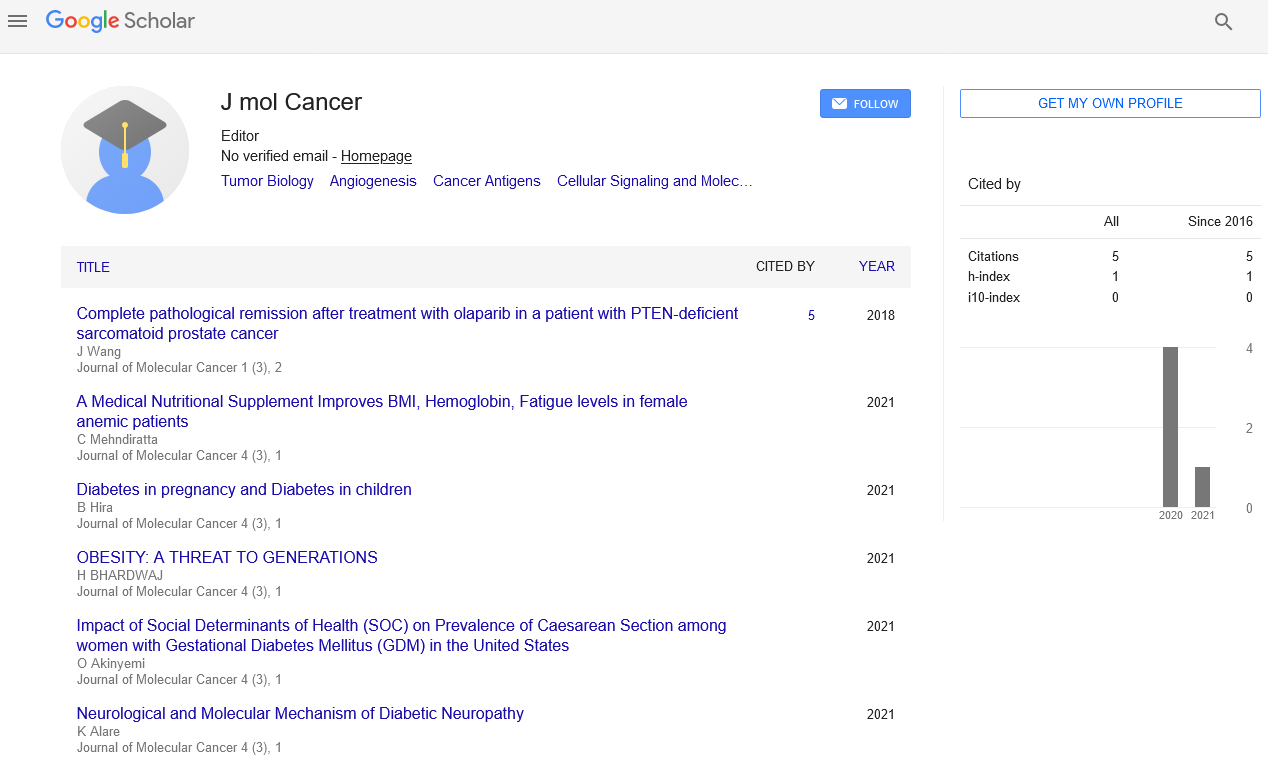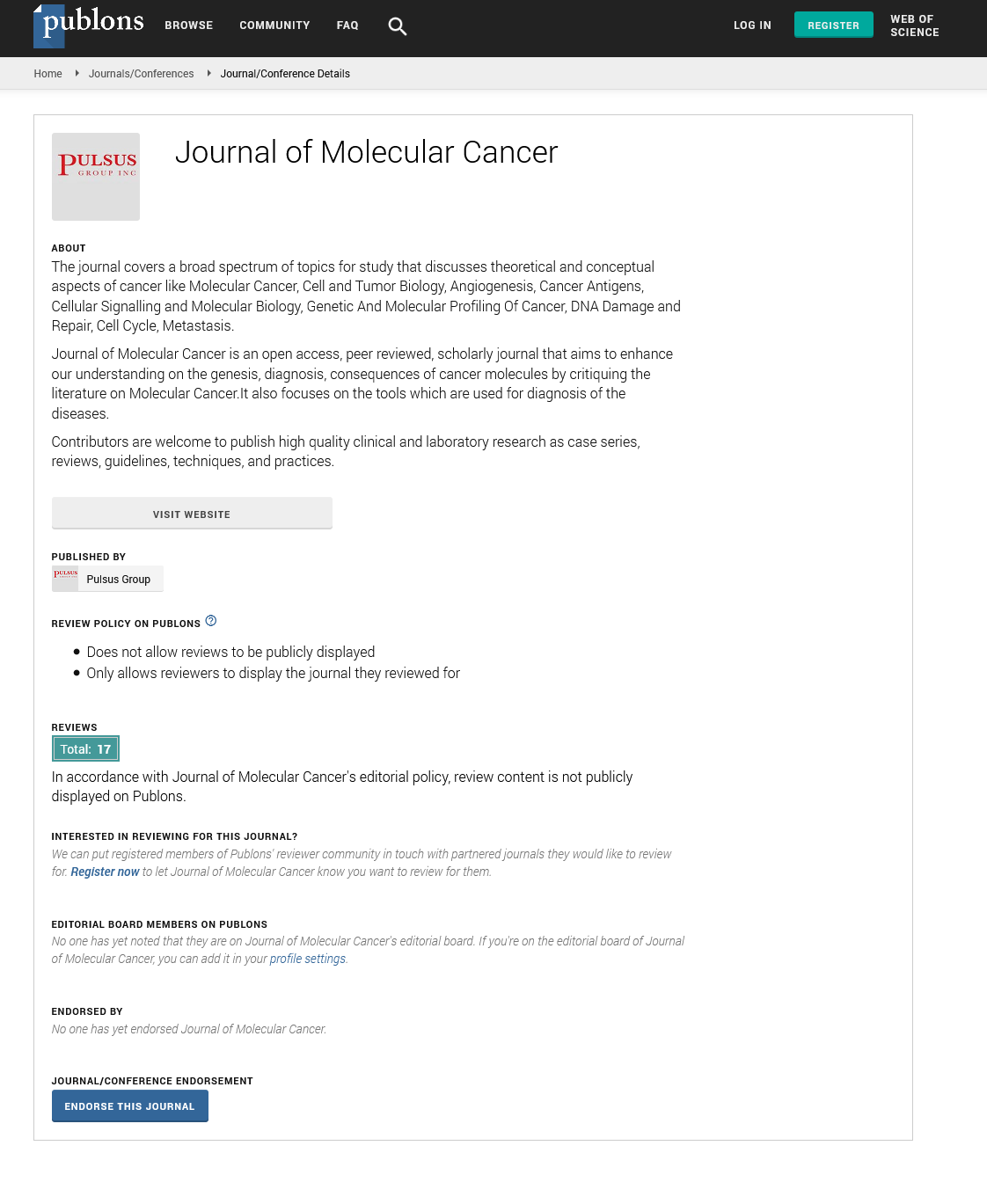
Sign up for email alert when new content gets added: Sign up
Abstract
The arrow of carcinogenesis
Author(s): Stephen G Grant*Many models of molecular carcinogenesis involve a multi-step progression through an accumulation of genetic or epigenetic events conferring various aspects of the transformed phenotype. Identification of tissue typespecific pathways involving distinctive genes has had some success, but it is becoming clear that such pathways may well be unique to each tumor. As an alternative, some researchers have targeted the mechanisms responsible for the accumulation of aberrant genes or gene expression, the “arrows” of transition between steps. The frequency of such genetic and epigenetic changes depends on both the lifelong exposure profile for an individual, as well as host factors, such as their innate rate of replication error and ability to remediate induced DNA damage. The totality of these effects can be evaluated functionally, however, using a number of approaches. Broadly defined, cumulative determinations of somatic mutational burden have been shown to predict subsequent cancer development, as well as demonstrating the development of genomic instability as a common characteristic of aging, that presages cancer incidence. Well established and validated methodologies exist that can be applied to the monitoring of wellness in patients before cancer occurs
Full-Text | PDF





